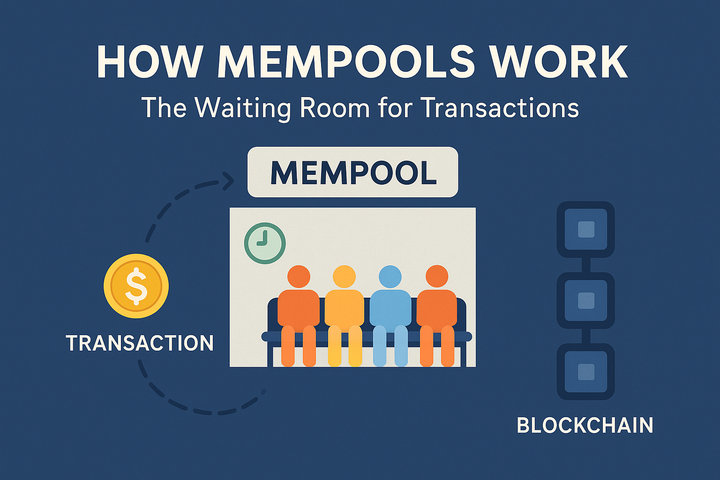Institutional DeFi Enters Bitcoin’s Realm: Franklin Templeton’s Strategic Pivot

Summary
Franklin Templeton’s recent strategic pivot—backing Bitlayer’s Bitcoin Virtual Machine (BitVM) and leaning into Bitcoin DeFi—signifies a major evolution in institutional crypto adoption. By marrying its successful Bitcoin ETF (EZBC) with infrastructure investments, the firm aims to deliver “new utility” to investors without diluting Bitcoin’s storied narrative as “digital gold” AInvest. This article unpacks Franklin Templeton’s rationale, the mechanics of Bitcoin DeFi, potential market consequences, and broader implications for regulatory clarity and institutional engagement in DeFi. Along the way, you’ll find links to Mitosis University’s Glossary, deep dives on Ecosystem-Owned Liquidity, and insights into governance-first models.
Introduction: Bridging Digital Gold and DeFi Rails
Imagine Bitcoin expanding beyond its traditional “store of value” role into a more dynamic, yield-generating asset—yet still retaining all the security and simplicity that made it the first cryptocurrency CoinDesk. That’s precisely the vision Franklin Templeton is pursuing by backing Bitlayer’s BitVM, a layer-2 infrastructure for Bitcoin DeFi AInvest. In doing so, the firm joins a growing chorus of institutional players acknowledging that DeFi (see our Glossary: Decentralized Finance) can coexist with Bitcoin’s core narrative CoinDesk.
Interactive Question: Before we dive in, what’s your current view of Bitcoin—pure digital gold, or something more? Drop a note in our Telegram contributors’ chat!
1. Franklin Templeton’s Bitcoin DeFi Playbook
1.1 The Role of Bitlayer & BitVM
Franklin Templeton is investing in Bitlayer, the company behind the Bitcoin Virtual Machine (BitVM)—a trust-minimized, layer-2 network that brings smart-contract-like capabilities to Bitcoin without compromising base-layer security AInvest. BitVM’s “virtual machine” design allows for faster transactions, lower fees, and advanced functionalities like atomic swaps, lending protocols, and token standards akin to Ethereum’s ERC-20 AInvest.
1.2 ETF Strength Meets DeFi Innovation
Since its January 2023 launch, Franklin Templeton’s Bitcoin ETF (EZBC) has garnered $260 million in net inflows and holds over 5,200 BTC (≈$500 million at ~$97 000/BTC) CoinDesk. By coupling this ETF success with DeFi infrastructure bets, the firm seeks to offer investors both capital appreciation and yield opportunities through Bitcoin DeFi products AInvest.
2. Why “New Utility” Matters for Investors
2.1 Yield in a Post-Halving Era
Bitcoin’s block rewards halve roughly every four years, pressuring miners’ revenue streams unless transaction fees rise CoinDesk. Franklin Templeton argues that robust DeFi activity—enabled by BitVM—can generate sustainable yield products that benefit holders and support network security AInvest.
2.2 Expanding Use Cases
Beyond store of value, DeFi lends Bitcoin to applications such as staking, lending, and decentralized insurance. BitVM’s BRC-20 token standard, for example, allows new assets and services to flourish on Bitcoin’s rails AInvest. This expansion of use cases aligns with Satoshi Nakamoto’s broader vision of a decentralized financial system CoinDesk.
Quick Tip: Check out our Glossary: Token Standards for more on BRC-20, ERC-20, and others.
3. Potential Market Consequences
3.1 Institutional Momentum & ETF Flows
Franklin Templeton’s move may trigger a domino effect: as more asset managers see Bitcoin DeFi as “risk-adjusted yield,” they could launch new ETFs—from Solana to XRP—broadening institutional demand Reuters. In February 2025, FT even filed for a Solana ETF, highlighting its appetite for diverse crypto exposure Reuters.
3.2 Liquidity, Volatility, and TVL
Today, Bitcoin DeFi TVL stands at around $5.3 billion—small compared to Ethereum’s DeFi ecosystem but growing rapidly CoinDesk. Franklin Templeton’s backing of BitVM could unlock meaningful liquidity, potentially reducing slippage and volatility in Bitcoin-based DeFi markets AInvest.
4. Regulatory Landscape & Clarity
4.1 U.S. Regulatory Shifts
The SEC’s approval of spot Bitcoin and Ether ETFs in 2024 marked a watershed moment Reuters. Franklin Templeton’s broader crypto ETF filings—such as its new ETF to track Solana—signal confidence in an evolving regulatory framework that balances investor protection with innovation Reuters.
4.2 Global Implications
In Europe and Asia, regulators are examining decentralized asset frameworks more closely, often emphasizing tokenization and know-your-customer (KYC) requirements SEC. As institutions like Franklin Templeton push deeper, they will likely collaborate with policymakers to shape compliance-friendly DeFi models, echoing Mitosis’s work on regulatory integrations for DeFi protocols.
5. Broader Implications for Institutional Crypto Adoption
5.1 Shifting Risk Perceptions
By embracing Bitcoin DeFi, Franklin Templeton reframes Bitcoin from a passive store of value into an active financial instrument with yield, collateral, and governance dimensions CoinDesk. This shift could lower the barrier for institutional adoption, as yield-seeking clients demand more than just capital appreciation.
5.2 Path to Mainstream DeFi
If large asset managers can safely deploy capital into DeFi rails on Bitcoin, retail platforms and traditional banks may follow suit. Mitosis University’s Ecosystem Connections research shows that partnerships between chains and protocols accelerate adoption—exactly the blueprint Franklin Templeton is sketching franklintempleton.com.
Conclusion: A New Chapter for Bitcoin & DeFi
Franklin Templeton’s bet on Bitcoin DeFi—anchored by BitVM and bolstered by its ETF pedigree—marks a significant step in institutional crypto adoption. By delivering “new utility” to investors and navigating regulatory headwinds, the firm is helping Bitcoin evolve from a simple store of value into a versatile, yield-generating asset class AInvest.
- Key Takeaway 1: Institutional ETF inflows can coexist with DeFi innovation, expanding use cases without diluting core narratives.
- Key Takeaway 2: Regulatory clarity on ETFs and tokenization frameworks will be critical for DeFi’s next wave.
- Key Takeaway 3: Partnerships—like Franklin Templeton with Bitlayer—pave the way for large-scale liquidity and mainstream DeFi participation.
What do you think? Will more asset managers embrace Bitcoin DeFi? Share your perspective in our private Telegram group, or explore Mitosis University’s Community Initiatives page to join the conversation.
Internal Links
- Liquidity TVL Glossary
- Expedition Boosts
- Straddle Vault
- Mitosis University
- Mitosis Blog.
- Mitosis Core: Liquidity Strategies.
Citations
- Franklin Templeton’s DeFi strategy & BitVM details AInvest
- Farrelly’s comments on Bitcoin DeFi utility CoinDesk
- EZBC ETF inflows and holdings CoinDesk
- Solana ETF filing highlights Reuters
- SEC approval & regulatory shifts Reuters
- Global tokenization roundtable (SEC Crypto Task Force) SEC
- Mitosis’s ecosystem partnership insights franklintempleton.com
- Yield implications in DeFi post-halving CoinDesk
- BRC-20 and token standards overview AInvest



Comments ()